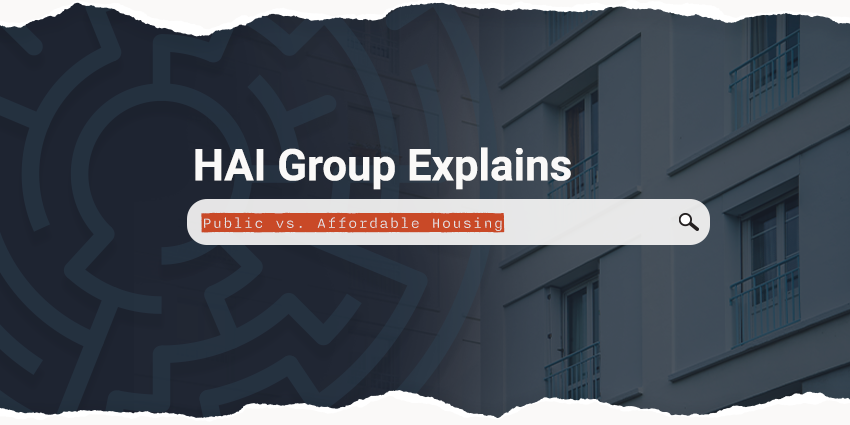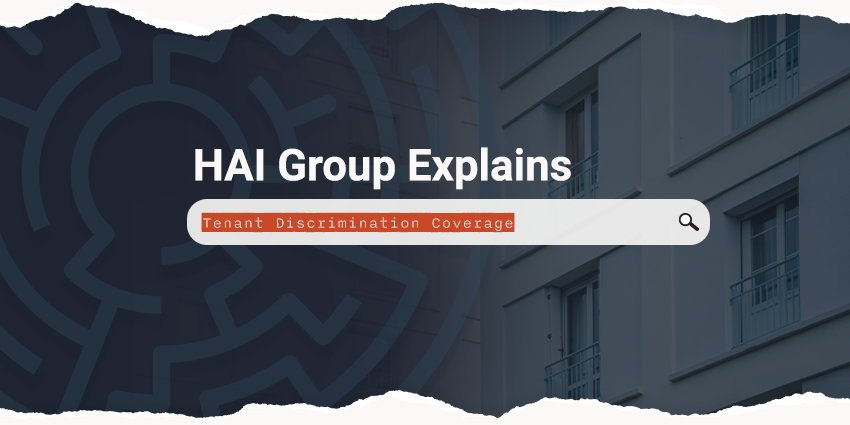The terms public housing and affordable housing are often confused, and understandably so, as both refer to rental housing established for eligible low-income families. But public housing and affordable housing are very different in terms of organization, management, and funding.
Still, public housing and affordable housing aren’t entirely decoupled. Read on to learn more about both low-income housing options.
What is public housing?
The public housing program is administered and funded by the U.S. Department of Housing and Urban Development (HUD). At the local level, housing authorities own and manage public housing properties. According to HUD, nearly a million households are living in public housing units managed by around 3,000 housing authorities across the country.
HUD covers the funding gap between rents collected and a housing authority’s operating costs. HUD also administers funds for capital improvements, such as unit renovations and equipment replacement, but funding for such improvements depends on the budget passed by Congress and is historically limited.  The agency also administers Choice Neighborhoods Planning Grants, which housing authorities can apply for to support neighborhood revitalization efforts.
The agency also administers Choice Neighborhoods Planning Grants, which housing authorities can apply for to support neighborhood revitalization efforts.
The public housing program started with the Housing Act of 1937 and was expanded a decade later. Since then, funding for the program has steadily decreased, all while public housing stock ages and declines. In 1998, Congress passed an amendment to the Housing Act of 1937 (Faircloth Amendment) that prevents HUD from funding the construction or operation of new public housing units with operating or capital funds “if the construction of those units would result in a net increase in the number of units the [housing authority] owned, assisted, or operated as of October 1, 1999.”
Low-income families and individuals are eligible for the public housing program based on annual gross income. Housing authorities set income limits based on guidance from HUD. To move into public housing, a family must have an income of less than 80 percent of the local median income. Rent is based on a family’s anticipated gross annual income, excluding deductions. According to HUD, residents pay the highest of the following for rent:
-
30 percent of their monthly adjusted income (annual income less allowed deductions);
-
10 percent of monthly income;
-
welfare rent, if applicable; or
-
a $25 minimum rent or higher (up to $50) set by a housing authority.
Residents can remain in public housing as long as they comply with the lease and stay within eligible income limits.
What is affordable housing?
Affordable housing operates outside of HUD's public housing program and often involves financial backing from private entities and non-profits.
Affordable housing eligibility varies by locality. In general, a family’s income may not exceed 50 percent of the median income for the county or metropolitan area in which the family chooses to live. Affordable housing residents generally pay no more than 30 percent of their monthly household income for rent and utilities.
If an individual or family qualifies for affordable housing, they’re issued a voucher through the Housing Choice Voucher program, and it is up to them to find a private property that accepts the voucher. Some multifamily buildings have reserved affordable housing units for voucher holders, while some private landlords may own single-family homes and accept vouchers to live there. The overarching goal of the voucher program is to place the choice of housing in the hands of the individual family.
Where public housing and affordable housing converge
While affordable housing isn’t directly funded by the federal government or managed by housing authorities, it’s still tied into public housing through several federal programs designed to incentivize private owners to invest in building affordable housing.
-jpg.jpeg?width=387&name=GettyImages-1347257020%20(1)-jpg.jpeg)
Housing Choice Voucher program
One example is the aforementioned Housing Choice Voucher program, which HUD administers. Housing authorities issue vouchers at the local level and receive federal funding to pay rent subsidies directly to private landlords on behalf of voucher holders. HUD also pays housing authorities a fee for the costs of managing the program. Each housing authority has a certain number of vouchers available and can apply for additional vouchers from HUD when funding is available.
A family doesn’t need to reside in a housing authority property to receive a voucher; the housing authority is just in charge of verifying income and other pertinent eligibility details.
The housing authority is also in charge of ensuring affordable housing units meet minimum health and safety standards. Once the housing authority approves a unit, the voucher holder and landlord sign a lease. At the same time, the housing authority and landlord enter into a rent subsidy contract that runs for the same term as the lease.
Rental Assistance Demonstration program
The Rental Assistance Demonstration program, known as RAD, enables housing authorities and private owners to convert public housing units to a Housing Choice Voucher model. As noted earlier in this article, public housing is historically underfunded. RAD provides an influx of capital sources, including private capital, to help housing authorities rehabilitate aging properties.
While private investors and development organizations are often in the mix, RAD requires that the housing authority maintain public stewardship of the converted RAD property through direct ownership or control of a public or non-profit entity.
Low Income Housing Tax Credit program
The Low Income Housing Tax Credit program, known as LIHTC, offers federal income tax credits as an incentive for private investors and developers to acquire, rehabilitate, and build rental housing targeted at lower-income households.
Insurance solutions for public and affordable housing
HAI Group was formed as a captive insurance carrier in 1987 to help solve the public housing insurance crisis. To this day, HAI Group is member-owned and steadfastly dedicated to serving the public and affordable housing communities.
We sell commercial insurance. More specifically, property and liability insurance.
Click here to learn more about our affordable housing insurance programs.
Click here to learn more about our public housing insurance programs.
Interested in learning more about the coverage solutions we offer? Connect with a member of our Account Services team.
This article is for general information only. HAI Group makes no representation or warranty about the accuracy or applicability of this information for any particular use or circumstance. Your use of this information is at your own discretion and risk. HAI Group and any author or contributor identified herein assume no responsibility for your use of this information. You should consult with your attorney or subject matter advisor before adopting any risk management strategy or policy.






